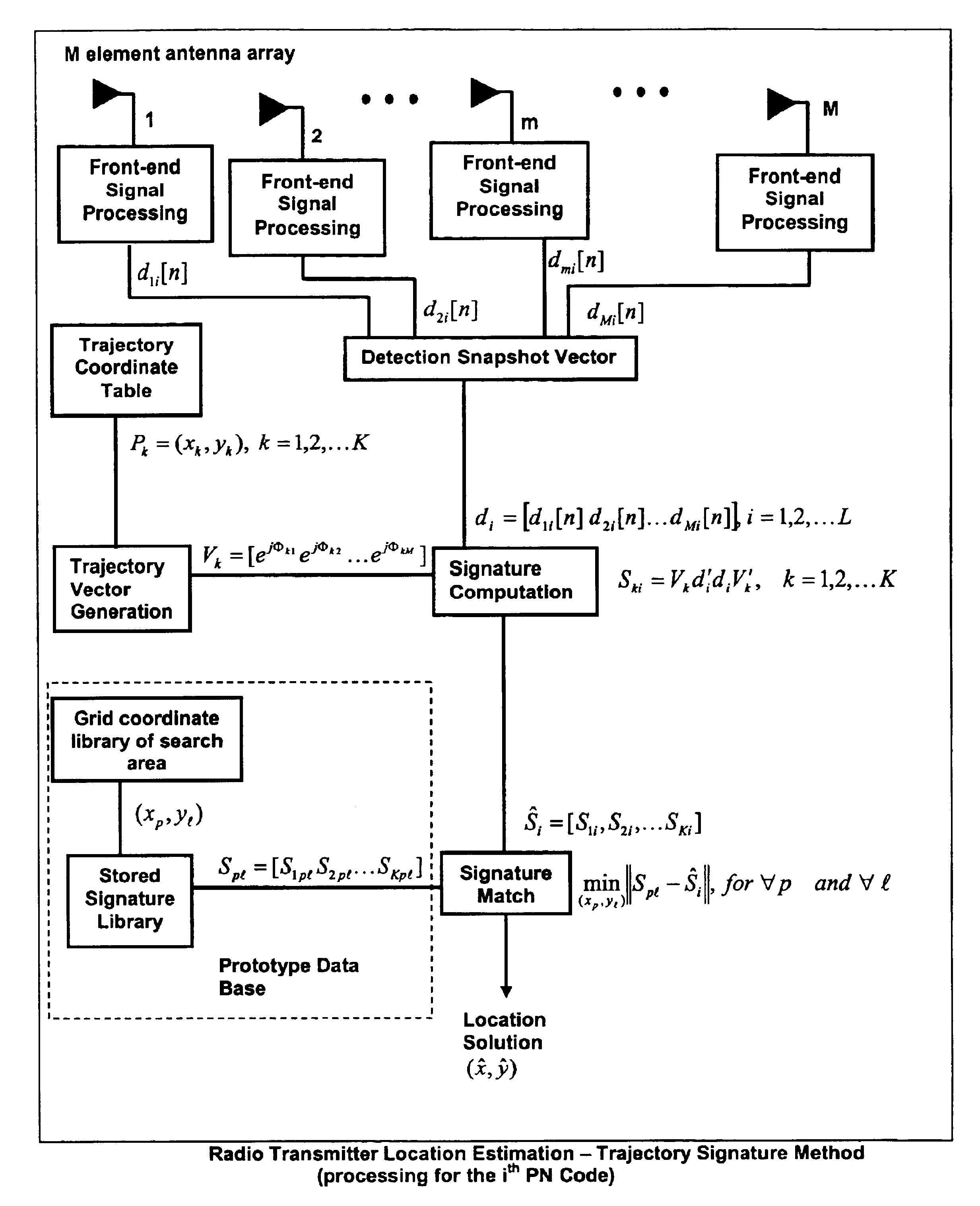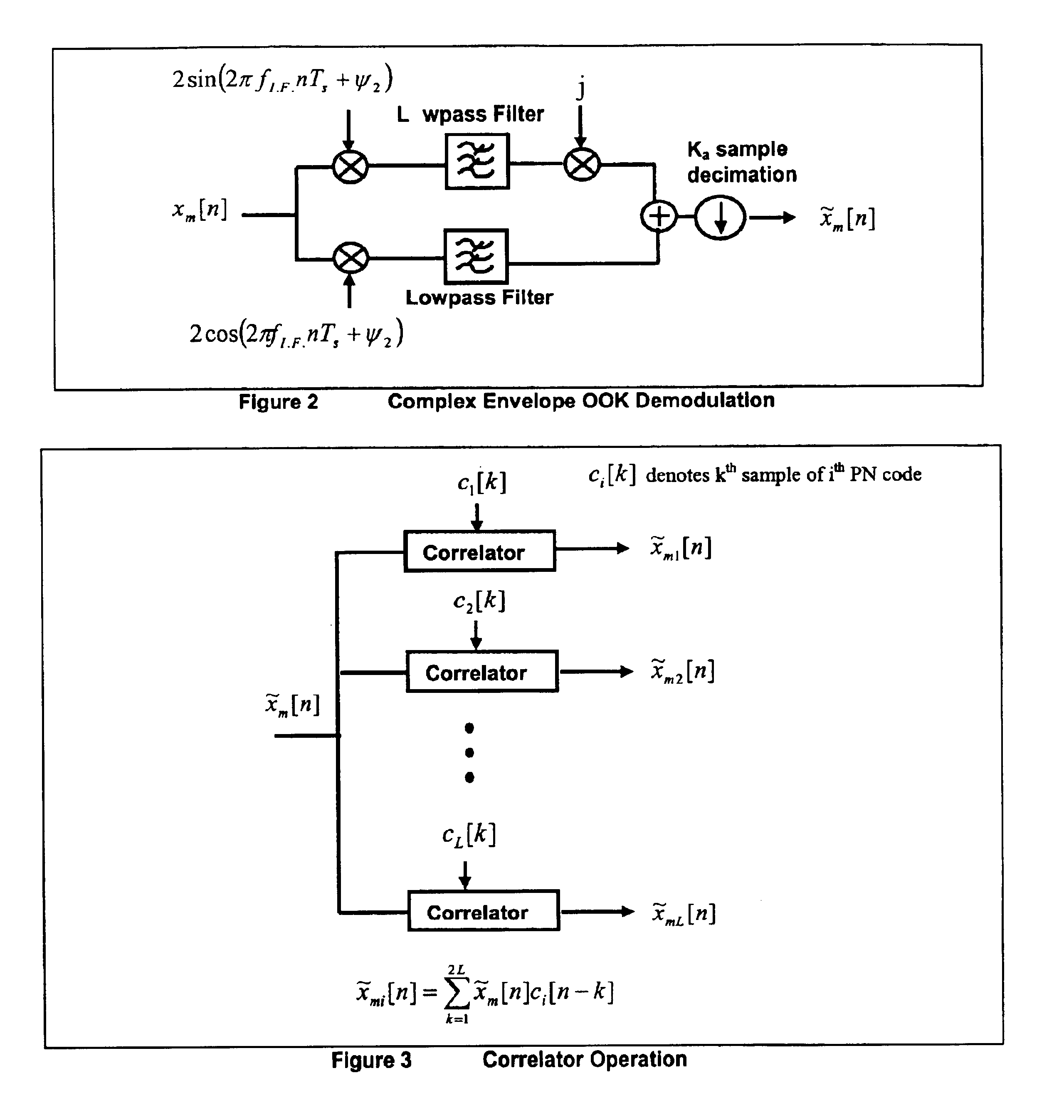Random antenna array interferometer for radio location
an antenna array and radio location technology, applied in direction finders, directions using radio waves, instruments, etc., can solve the problems of preventing coherent demodulation, preventing the implementation of sub-meter precision time-of-arrival location methods, and determining precise (1 m resolution) positions of wildlife radio transmitters. to achieve the effect of reducing noise power
- Summary
- Abstract
- Description
- Claims
- Application Information
AI Technical Summary
Benefits of technology
Problems solved by technology
Method used
Image
Examples
Embodiment Construction
[0016]FIGS. 1 to 5 describe the invention with respect to orthogonal sub-space projection of an individual detection snapshot vector taken from a CDMA enabled transmitter. FIG. 6 describes signature matching as an alternative to orthogonal sub-space projection. FIGS. 7 through 9 provide a generalization of both methods to non-CDMA signal localization.
[0017]FIG. 1 is a flow chart showing the front-end signal processing chain for mth antenna chain CDMA applications.
[0018]FIG. 2 is a block diagram of showing Complex Envelope OOK Demodulation, which appears as a single block in the flow chart of FIG. 1.
[0019]FIG. 3 is a block diagram showing the Correlation function used to decouple individual CDMA transmitter signals from one another.
[0020]FIG. 4 is an expanded view of the Normalization block in the flow chart of FIG. 1.
[0021]FIG. 5 is a flow chart showing the location estimation based on pure phase angle of arrival information for a single pseudo random PN code decoupled from other CD...
PUM
 Login to View More
Login to View More Abstract
Description
Claims
Application Information
 Login to View More
Login to View More - R&D
- Intellectual Property
- Life Sciences
- Materials
- Tech Scout
- Unparalleled Data Quality
- Higher Quality Content
- 60% Fewer Hallucinations
Browse by: Latest US Patents, China's latest patents, Technical Efficacy Thesaurus, Application Domain, Technology Topic, Popular Technical Reports.
© 2025 PatSnap. All rights reserved.Legal|Privacy policy|Modern Slavery Act Transparency Statement|Sitemap|About US| Contact US: help@patsnap.com



